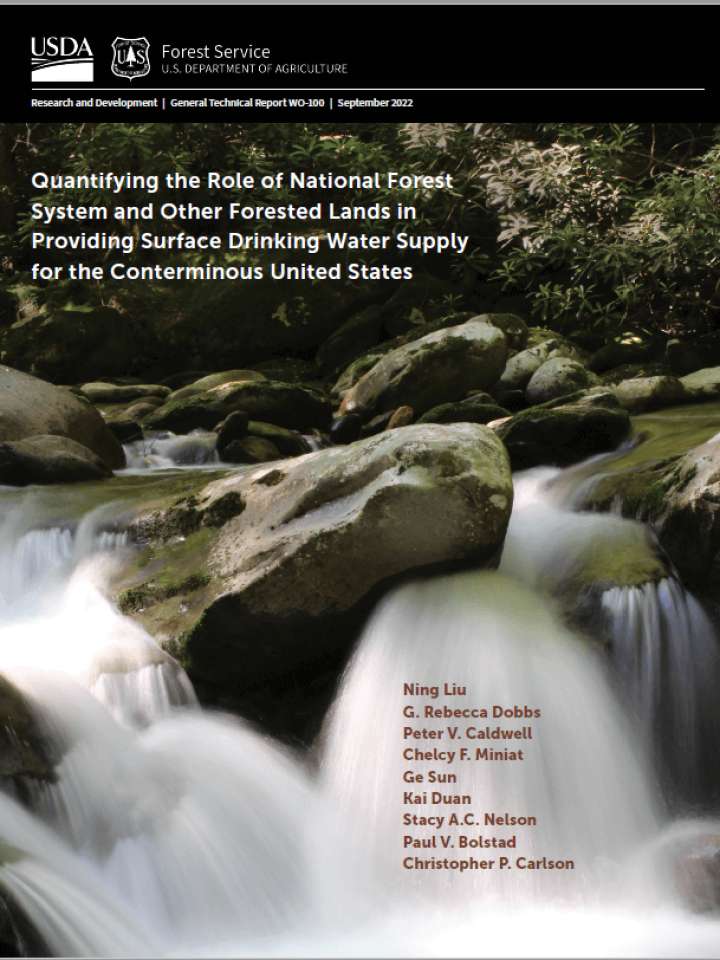Quantifying the role of National Forest System and other forested lands in providing surface drinking water supply for the conterminous United States
This study aims to quantify the contribution of National Forest System (NFS) and other forested lands to surface drinking water supply systems in the conterminous United States (CONUS). As such, the researchers and authors of this report estimated the surface water supply and the origin of that water at each public surface drinking water intake using a water balance model while accounting for natural water drainage throughout the river network as well as water transferred through inter-basin transfers (IBTs).
The findings from the study indicate that NFS and other forested lands are the dominant surface water supply source in the West. Inter-basin transfers played a critical role in providing surface drinking water supply from NFS and other forested lands to urban areas, especially in the arid West. The study developed benchmark high-resolution data for water supply, identified surface water sources and withdrawal locations for public surface drinking water supplies, and highlights the water-related benefits of NFS and other forested lands to downstream communities and people living in other areas through IBTs.
Explore further

